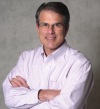
If you’ve ever wondered how the United States can have $24 trillion in total retirement savings and still suffer from a retirement “crisis,” you might want to take a look at the 2015 edition of the Global Wealth Databook, just published by the Research Institute at Credit Suisse.
The Credit Suisse report shows that those trillions are concentrated in only a handful of hands, and that while the middle class in the U.S.—those with between $50k and $500k—represents about 38% of the population it has only about 20% of the nation’s financial wealth. In a country with an egalitarian self-image, that’s surprising. Shocking, even.
“In North America – alone among regions – the population share of the middle class exceeds their share of wealth: in other words, the middle class as a group have less than average wealth. In fact the average wealth of middle class adults in North America is barely half the average for all adults,” the report says.
“In contrast, middle class wealth per adult in Europe is 130% of the regional average; the middle class in China are three times better off in wealth terms than the country as a whole; and the average wealth of the middle class in both India and Africa is ten times the level of those in the rest of the population.”
The middle class in the U.S., at 38% of the population, is also smaller than the middle class elsewhere, the report said. Proportionate to the total, the middle class is smallest in crowded, impoverished India (3% of the population) and largest in sparsely populated, resource-rich Australia (66%). In most high-income countries, the middle class includes 50% to 60% of the population.
The shrinkage of our middle class is not entirely a bad thing, the authors of the report observe. Between 2000 and 2015, some middle class Americans evidently migrated to the uppermost 12% of the population, while others dropped into the 50% of the population with less than $50,000 in wealth. (The report didn’t examine age-specific wealth levels.) The wealth of our middle class is dwarfed by the wealth of our upper class.
In the U.S., the wealthiest 10% of families have 75% of the wealth, and the top one percent has 35% of the wealth. The top 25% have 90% of the wealth. In the U.K, by comparison, the top one percent of adults has 12.5% of the wealth and the top 10% has 44%.
What does this “inequality” in the U.S. have to do with the retirement crisis? That’s hard to say. Is the distribution of wealth a zero-sum game? Or is it a game where each family determines their own wealth or poverty, independent of the others? Or would the bottom 88% be poorer if not for the industry of the top 12%? Is there a cause-and-effect relationship between retirement readiness and the distribution of wealth, or just a correlation? Or a combination of the two.
When faced with difficult questions, I call on people who are better informed than I am. In this case, I reached out to Steven Sass of the Center for Retirement Research at Boston College, who wrote “The Promise of Private Pensions” (Harvard University Press, 1997). Sass, whose organization publishes a retirement readiness index, doesn’t think that retirement readiness is a finite resource.
“Rising ‘inequality’ per se, however, seems orthogonal to [i.e., statistically independent of] notions of a ‘retirement crisis,’” Sass told RIJ. “If fewer retirees were at risk of poverty or of being unable to sustain their pre-retirement standard of living (or some such measure), the ‘crisis’ would diminish even if the rich retirees got fabulously richer. I doubt that the rich got richer at the expense of the middle, unless one has a rather robust definition of ‘at the expense of.’”
The authors of the Credit Suisse report noted that a couple of their procedural decisions may have contributed to their small estimate of the small size of the U.S. middle class. First, young people with less than $50,000 in wealth were not included in the middle class, when their incomes may have justified inclusion. Second, state pensions (such as Social Security) weren’t counted as personal wealth; that would have pushed more people up into the middle class. On the other hand, the same rules were applied to all countries, and the U.S. middle class was at least relatively small.
Given those limitations, the study may not tell us a lot about the link between distribution and wealth and retirement readiness. The most worrisome part of the report may be the fact that about 50% of Americans have virtually no wealth. According to the Credit Suisse report, the wealthiest 12% of Americans have 79.1% of the country’s wealth, the 38% who belong to the middle class have 19.6%, and the indigent half of Americans owns only 1.3%.
© 2015 RIJ Publishing LLC. All rights reserved.

